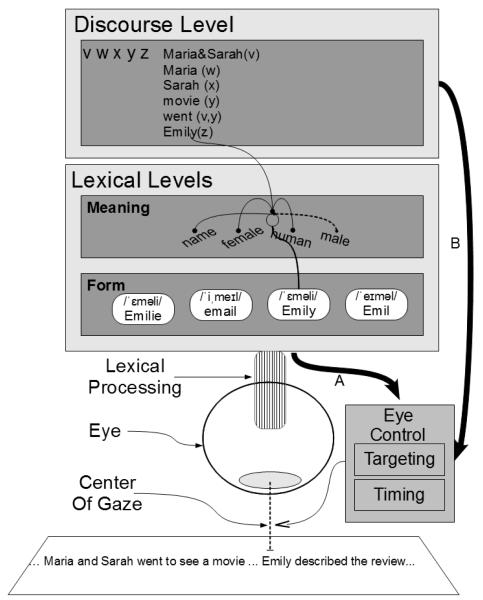Figure 1.
Model illustrating how language comprehension contributes to eye-movement control during reading. The control of the targeting and timing of saccades is influenced by processes occuring at the lexical level and the discourse level. Word recognition at the lexical level makes a major contribution to the timing of saccades and in some cases their targeting, with ease of word recognition having a strong effect on measures of first-pass reading (as shown by the arrow marked A). While basic word recognition goes on, the effort to understand the meaning of the sentence proceeds by accessing and updating a discourse-level representation in long-term (episodic) working memory of the characters and events depicted by the text. Difficulties at this level of comprehension can affect eye-movement control (as shown by the arrow marked B), an effect that primarily appears in later measures of eye movements such as rereading.

